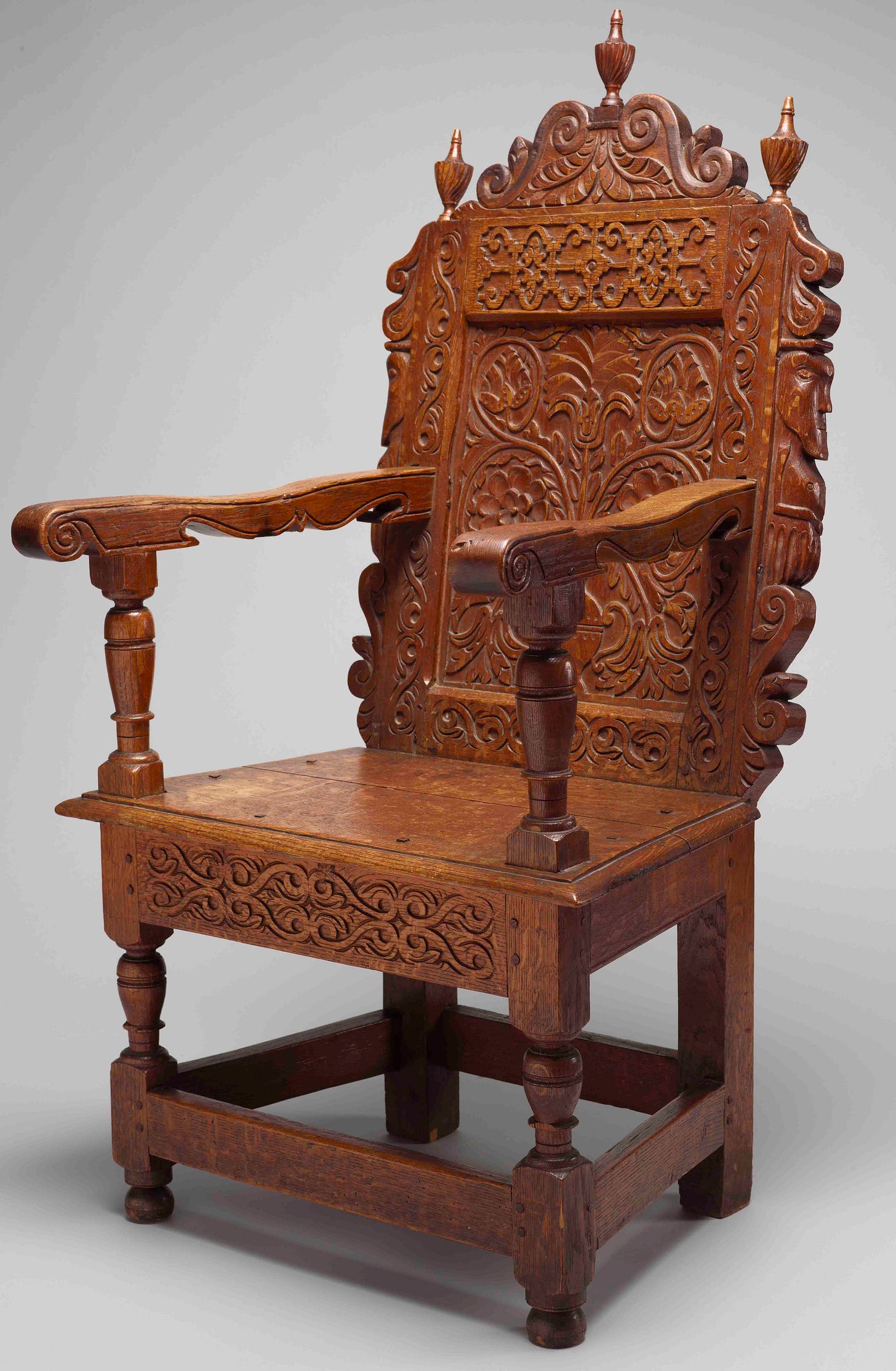[a post by request - something new. Rick L, a fanatical 17th-century oak furniture aficionado wrote and asked if I’d write about wainscot chairs. In case there’s at least one other person interested in that subject, here goes. If there’s something else on anyone’s mind that fits in my sphere, let me know what you might like to hear me rave on about.]
Wainscot chairs - even the name needs explaining. Let’s skip over why they’re called that for a minute. They’re joiners’ chairs featuring rectangular mortise and tenon joints and almost always a framed panel in the rear section. A wooden seat. And arms - when a joiner made chairs without arms, they were called something else - backstool, turkey-work chair, leather chair, etc. We’ll deal with all that in time.
In New England, there’s a few well-known wainscot chairs, some we’ve probably seen on this blog before. Two descended in the family of Thomas Dennis, one at Bowdoin College Museum of Art and the other at the Peabody Essex Museum in Salem, Massachusetts. These are my favorites because of the carvings. They appear, in photographs anyway, to be huge chairs but in reality they’re quite small side-to-side. A snug fit inside those bulky arms.
The basics of a wainscot chair are upright front stiles extended up past the seat to connect under the arms. These stiles most often include turned decoration between the aprons and stretchers and again above the seat and below the arms. The front stiles of maybe every New England example are squared stock, usually around 2” square, with turned decoration between the blocks that house the mortise and tenon joints. Some English chairs, particularly those from Salisbury, Wiltshire use a round, turned tenon to connect to the underside of the arms. Not so in New England.
The rear stiles below the seat are plumb, just like the front stiles. But above the seat they’re canted to provide some room to tilt back as you sit in them. This cant is produced by hewing and planing, not bending or any other method. It means the chunk of wood you make these stiles from is pretty bulky. They’re usually broader across the face than the front stiles too. This means the rear rails and front rails are different lengths. The seat is a trapezoid - wider across the front than the rear. Side rails flare out from the rear to meet the front stiles.
A few ways to get this result. The rear stiles don’t vary much in concept - broad front face is parallel to the front face of the chair. The side of the rear stiles is usually angled to match the flare of the seat plan, sometimes left square to the face. The side rails meet the rear stiles’ front face with an angled tenon shoulder. And the corresponding mortise is angled in the front face of the rear stile.
Keep reading with a 7-day free trial
Subscribe to Follansbee's Substack to keep reading this post and get 7 days of free access to the full post archives.



